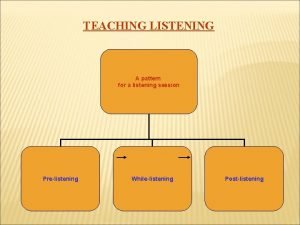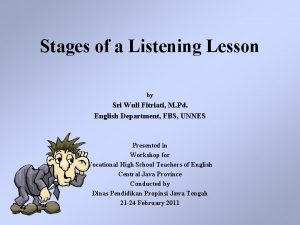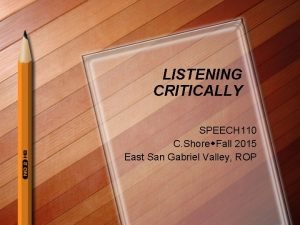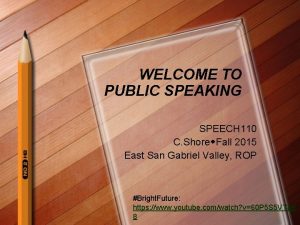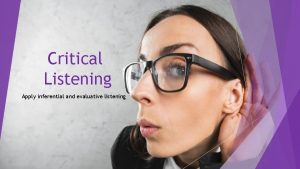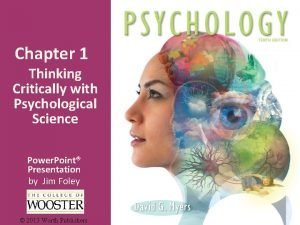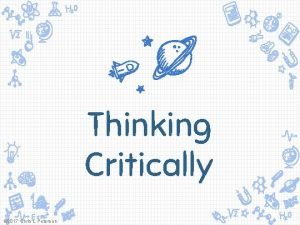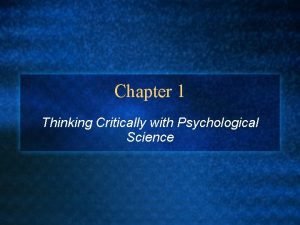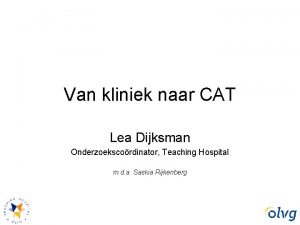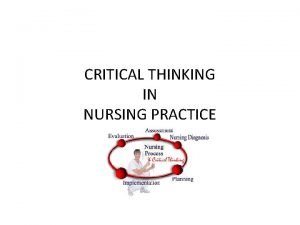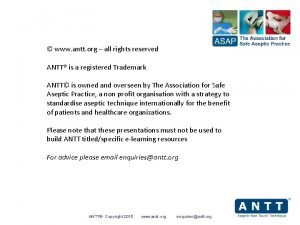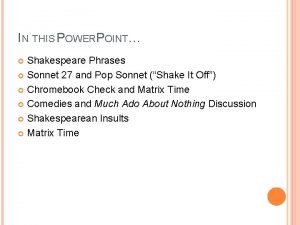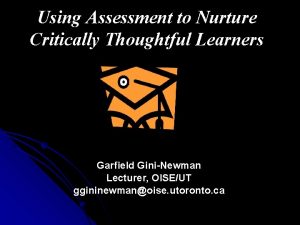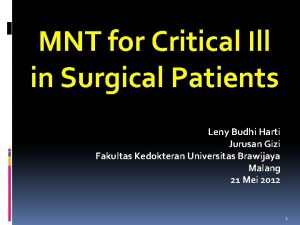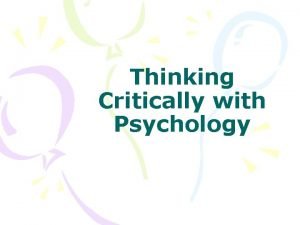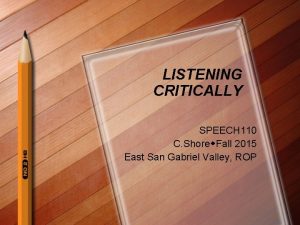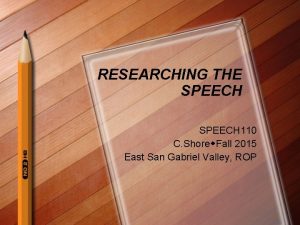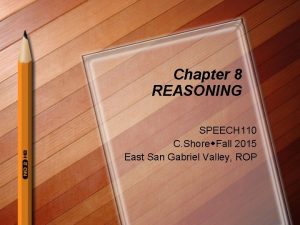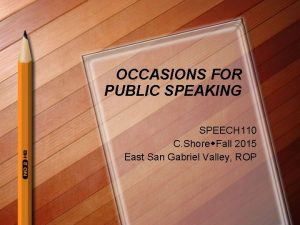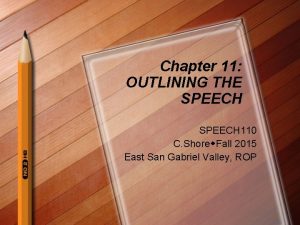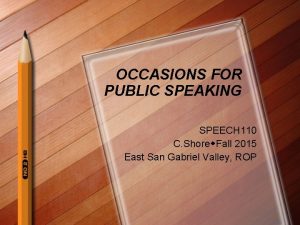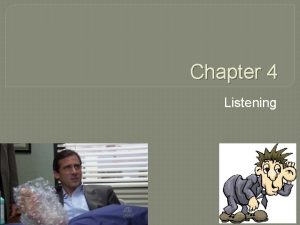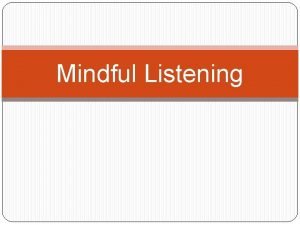LISTENING CRITICALLY SPEECH 110 C Shore Fall 2015



















- Slides: 19

LISTENING CRITICALLY SPEECH 110 C. Shore Fall 2015 East San Gabriel Valley, ROP 1

Learning Objectives l l l 4. 1: Distinguish between hearing and listening and explain why listening skills are important to speakers. 4. 2: Identify obstacles to effective listening. 4. 3: Listen carefully by mapping the central ideas of a speech and by taking notes. 4. 4: Explain how critical thinking is applied in the speaking situation. 4. 5: Evaluate speeches as a result of critical listening. 2

4. 1: Are You Really Listening? Hearing l Physiological process Listening l l Mental operation that involves the process of recognizing, understanding, accurately interpreting and responding The Listening Process 1. 2. 3. 4. 5. l TED Talks: Active listening (2: 15) -> http: //www. youtube. com/ watch? v=Ng. Vd 2 u. NRIe. E l Select Attend Understand Remember Respond Active Vs. Passive Listening fidelity 3

Activity l 5 Volunteers: GET OUT! Well, 1 should stay l http: //www. youtube. com/watch? v= 9 n 6 Ht. OGY_p. Y

Debrief l l l What facts from the video were forgotten? Which were remembered? Volunteers – Explain why you selected and attended to particular information or details but not others? l Class – What other factors may have played into students’ ability (or inability) to listen?

4. 1: Are You Really Listening? l Checking for accuracy – Ask questions/Perception checking l Giving (and Getting) Feedback – *Interplay – Non/Verbal l Evaluating Messages – Audience -> Interplay 6

4. 2: Challenges to listening l Listening Barriers: factors that interfere with our l Environment ability to comprehend information and respond appropriately – Noise – Temperature l Hearing & Processing – Physical or medical issues l Multitasking – Attending to several things at once – (drive and text? ) l Boredom/ Overexcitement

4. 2: Challenges to listening l Listener distractions – Think faster than process – Internal & external l l Limited attention span Jumping to conclusions – Assimilation of statements l l l No dog shall be in a public place without its master on a leash. No dog shall be in a public place without a leash. Situational distractions 8

4. 3: Strategies for Careful Listening l Mapping – Identifying thesis – Identifying the main ideas – Assessing the main ideas – Deciding whether the main ideas support thesis 9

4. 3: Strategies for Careful Listening l Note taking – – – l Focus on thesis and main ideas Take notes quietly Use key words Organize rough outline Abbreviate and use symbols Evaluate speech TEDtalks: Julien Treasure – 5 ways to listen better (4: 59) – http: //www. youtube. com/watch? v=c. Sohjl. YQI 2 A 10

4. 4: Critical Thinking Characteristics l l l Will not accept assertions on faith Distinguish facts from opinions Seek to uncover assumptions Are open to new ideas Apply reason and common sense Relate ideas to current knowledge Skills l l Question and challenge Recognize differences Form opinions and support claims See ideas in a broader context 11

4. 4: Critical Thinking l Applying critical thinking to the speech situation – Are the main ideas identifiable? – Are the ideas connected? – Are the ideas supported? – Does judging thesis affect beliefs? 12

4. 5: Evaluating Speeches Critically l Evaluating speeches critically – Did the speech demonstrate the principles and techniques of public speaking? – What was strong and what was weak? – How might the speaker improve? l Rhetorical situation – What was the specific rhetorical situation? – What constraints and opportunities did it pose? – How well did the speaker respond to the situation? l Speaker’s purpose – Expediency standard--Judging by effects – Artistic standard--Judging by ethical execution 13

4. 5: Evaluating Speeches Critically l Evaluating classroom speeches – Listen critically – Focus on specific purpose – Be constructive – Engage in discussion l Impromptu speeches for criticism, perhaps? 14

4. 5: Evaluating Speeches Critically l Evaluating speeches outside of the classroom – Determine evaluation standards – Learn new techniques l Rhetorical criticism – Analytical assessment l Messages affecting other people – Two by-products l Provides insights into your own public speaking l Develops your sensitivity to public speaking 15

Take Away l 4. 1: Distinguish between hearing and listening and explain why listening skills are important to speakers. – Physiological process v. Meaning making – Feedback & perception check l 4. 2: Identify obstacles to effective listening. – Psychological, physical barriers, mutli-tasking, attention span l 4. 3: Listen carefully by mapping the central ideas of a speech and by taking notes. – Diagram to distinguish the relationship of thesis and main ideas – Note-taking: Thesis + main ideas, key words 16

Take Away l 4. 4: Explain how critical thinking is applied in the speaking situation. – Question EVRYTHING, except me ; ) – Critical listeners should be open to claims from speaker l 4. 5: Evaluate speeches as a result of critical listening. – Identify rhetorical situation (speech as whole) – Identify speakers purpose (expediency & artistically) 17

Activity 2: TBBT (S 3 E 10) Gorilla Project http: //www. youtube. com/watch? v=AEIn 3 T 6 n. DAo 1. 2. 3. 4. 5. 6. What kind of listening is being portrayed? At what point(s) does listening break down? What prompted poor listening? How did the speaker respond when the receiver stopped listening? Imagine that you are the listener a. How would you rephrase the statements to the sender that you do not understand what is being said? b. How could you ask for more information & solve the listening problems? Imagine that you are the sender a. How would you rephrase what was being sent to the receiver to communicate that you recognize (or don’t recognize) why the receiver doesn’t understand? b. How could you show empathy or validate without judgment that the receiver does not understand?

Discussion Questions l l What does it mean to “listen well”? What behaviors do you engage in when you are really trying to listen? Why is it difficult to listen to a boring speech? Who is responsible for making a speech less boring –the speaker or the listener?
 Pre while post listening activities
Pre while post listening activities Stages of listening lesson
Stages of listening lesson Listening critically
Listening critically Numero niss
Numero niss 100 011
100 011 Speech 110
Speech 110 Active and passive listening
Active and passive listening Critical listening
Critical listening Thinking critically with psychological science
Thinking critically with psychological science Thinking critically
Thinking critically Thinking critically with psychological science answer key
Thinking critically with psychological science answer key Pico cat voorbeeld
Pico cat voorbeeld Importance of critical thinking in nursing process
Importance of critical thinking in nursing process Micro critical aseptic field
Micro critical aseptic field Www.antt
Www.antt Care of critically ill surgical patient
Care of critically ill surgical patient Pop sonnet examples
Pop sonnet examples Critically thoughful
Critically thoughful Nasogastrio
Nasogastrio Illusory correlations ______.
Illusory correlations ______.
